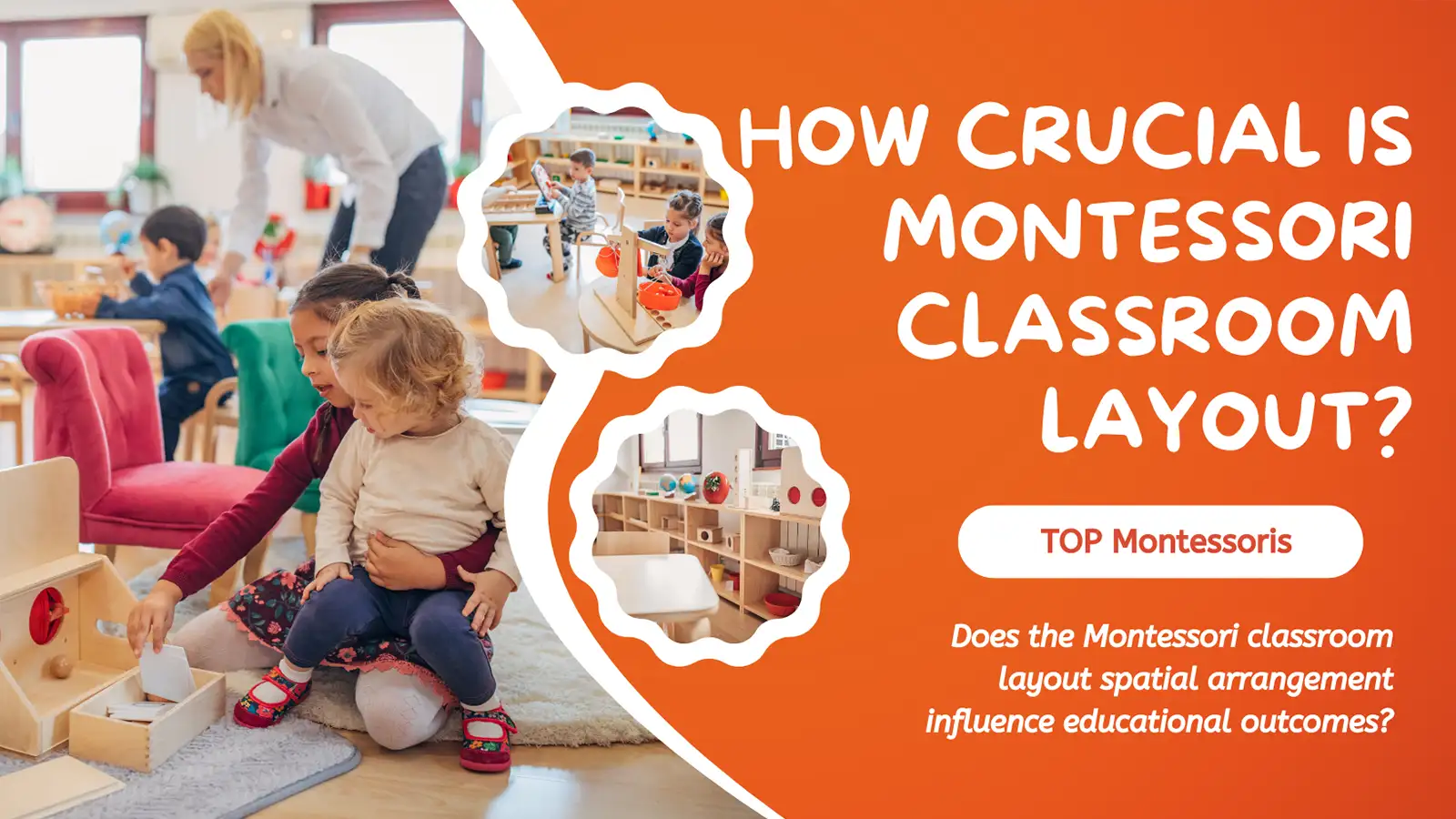Have you ever pondered the significance of a Montessori classroom layout on a child’s learning experience? Does the arrangement of furniture and learning materials significantly influence a child’s developmental journey? Does the Montessori classroom layout spatial arrangement influence educational outcomes?
In my experience as the CEO of TOP Montessori, the Montessori classroom layout is crucial. It’s not merely about aesthetics; it’s about creating an environment that embodies the Montessori philosophy. It reflects the Montessori educational philosophy, promoting independence, nurturing curiosity, and accommodating the unique learning styles of each child – one that respects and responds to the developmental needs of each child.
The design of a Montessori classroom goes beyond mere furniture arrangement. It’s about creating an environment that resonates with the ethos of Montessori education, fostering a love for learning and independence in children. Engaging a child’s curiosity is deeply connected to the structure of their learning environment. Let’s explore the complexities of classroom layout in early childhood education.
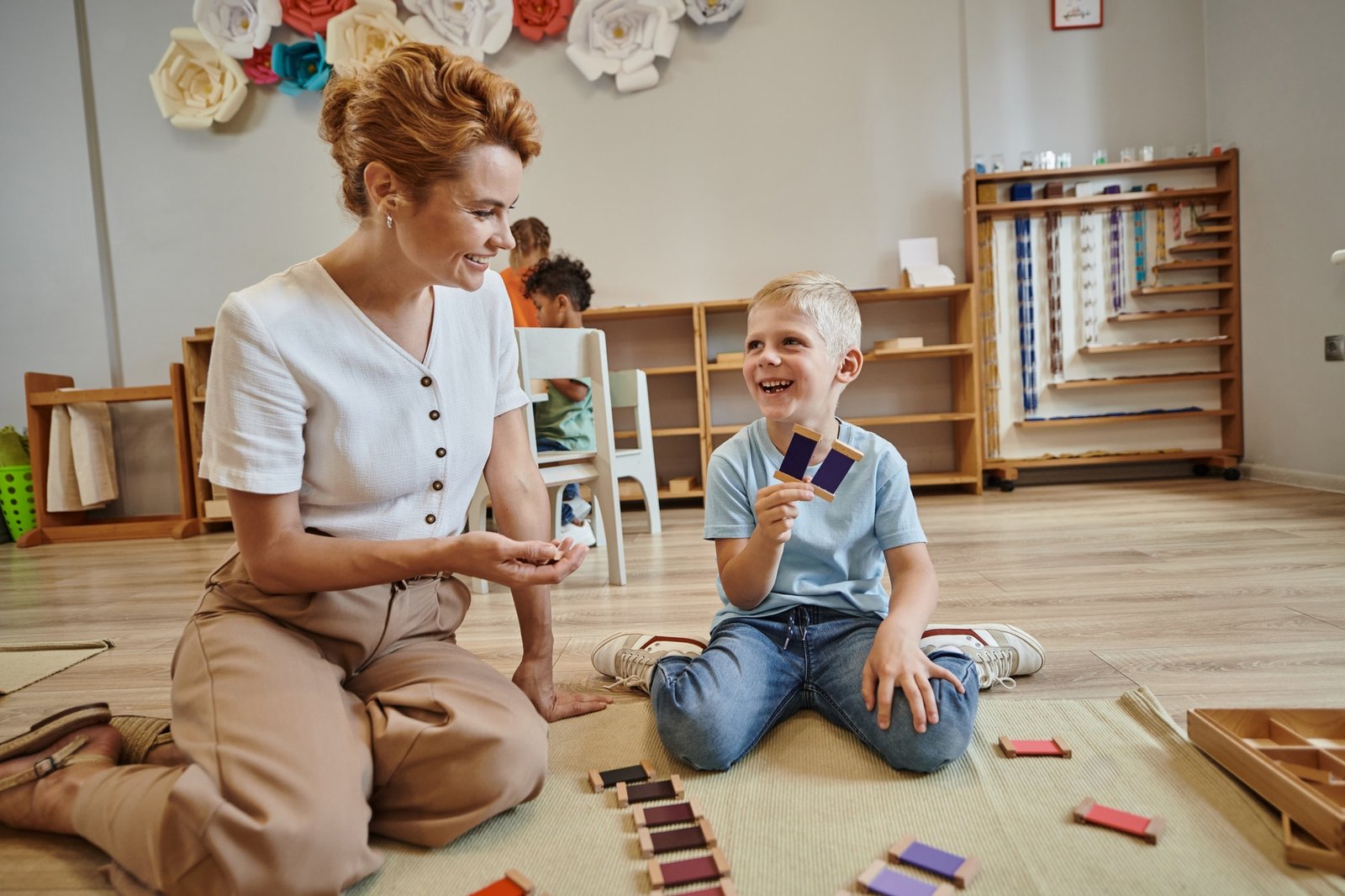
The Significance of Montessori Classroom Layout
In Montessori education, the environment is often called the ‘third teacher.’ This concept underscores the significance of the classroom layout. But what makes it so vital? How does it differ from traditional classroom setups?
A Montessori classroom layout differs from a traditional classroom setup with rows and rows of desks. Montessori classrooms are organized to encourage free movement, interaction, and accessibility; The layout of a Montessori classroom directly affects the children’s learning experience. From the placement of furniture to the selection of materials, every detail is carefully designed and every element serves a specific educational purpose.
In Montessori classrooms, everything is scaled to the child’s perspective. The low bookshelf, the cabinet for storing toys, and the Montessori Materials, which allow children to do things on their own, are all pieces of furniture designed in children’s sizes, which not only help children exercise their own hands but also help and recognize their autonomy and independent learning abilities.

Which Areas Are Found in a Montessori Classroom Layout?
- The Practical Life Area: Focusing on fostering independence and responsibility, it includes activities like pouring, sweeping, and buttoning to develop fine motor skills and self-sufficiency.
- The Sensorial Area: Dedicated to engaging the senses, this area is equipped with materials like color grading activities, sound boxes, and texture sorting to refine sensory perceptions.
- The Language Area: Encouraging communication and literacy, it features phonetic reading, writing, and vocabulary development materials such as movable alphabets and storybooks.
- The Mathematics Area: Making math tangible and engaging, this area includes materials like bead chains for counting and geometric solids for shape recognition to illustrate abstract mathematical concepts concretely.
- The Geographic Area: This area enhances understanding of the Earth and its various environments. It includes maps, physical and political globes, and materials that represent different landforms and water bodies, fostering a global perspective and geographical knowledge.
- The Biological Area: Focused on the study of life and living organisms, this area includes plant and animal life cycles, botany, zoology, and human anatomy materials. It encourages exploration and understanding of the natural world, teaching children about the diversity and complexity of life on Earth.
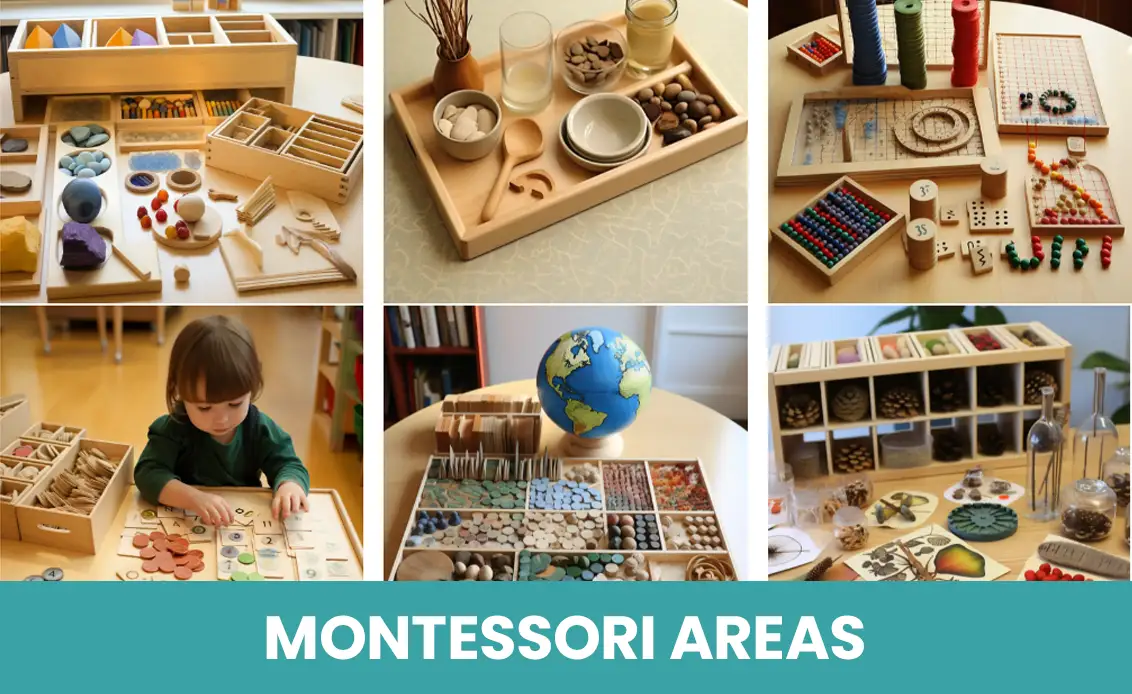
What Makes Montessori Classroom Layout Unique?
Montessori classrooms are renowned for their unique design and layout. But what exactly sets them apart from traditional classrooms? Why is the layout considered so instrumental in the Montessori method of teaching?
- Child-Centered Design: Unlike traditional classrooms, Montessori spaces are designed from a child’s perspective. Furniture is child-sized, and materials are easily accessible, promoting independence and self-reliance.
- Open and Accessible Spaces: The layout emphasizes open, uncluttered spaces, allowing free movement and interaction. This openness is vital for fostering a sense of freedom and choice, essential elements in Montessori education.
- Functional Areas: Specific areas for different activities such as reading, arts, practical life skills, and sensory activities are distinct yet integrated, encouraging a holistic learning experience.
Selecting the Right Montessori Furniture and Materials
Balancing Beauty, Function, and Safety
At TOP Montessoris, our approach to creating preschool furniture combines beauty, functionality, and safety. Our products are designed to be engaging, durable, and suitable for young learners, contributing to an environment that is both stimulating and secure.
Color and Texture
A Montessori classroom is not just a learning space; it’s a sensory experience. Color and texture play essential roles in this setting. They can stimulate curiosity and create a calming atmosphere that supports concentration and learning.
Sensory Engagement
The thoughtful use of color and texture in materials and furniture can profoundly impact learning. These elements can stimulate curiosity, aid in cognitive development, and create a calming atmosphere conducive to focus and exploration.
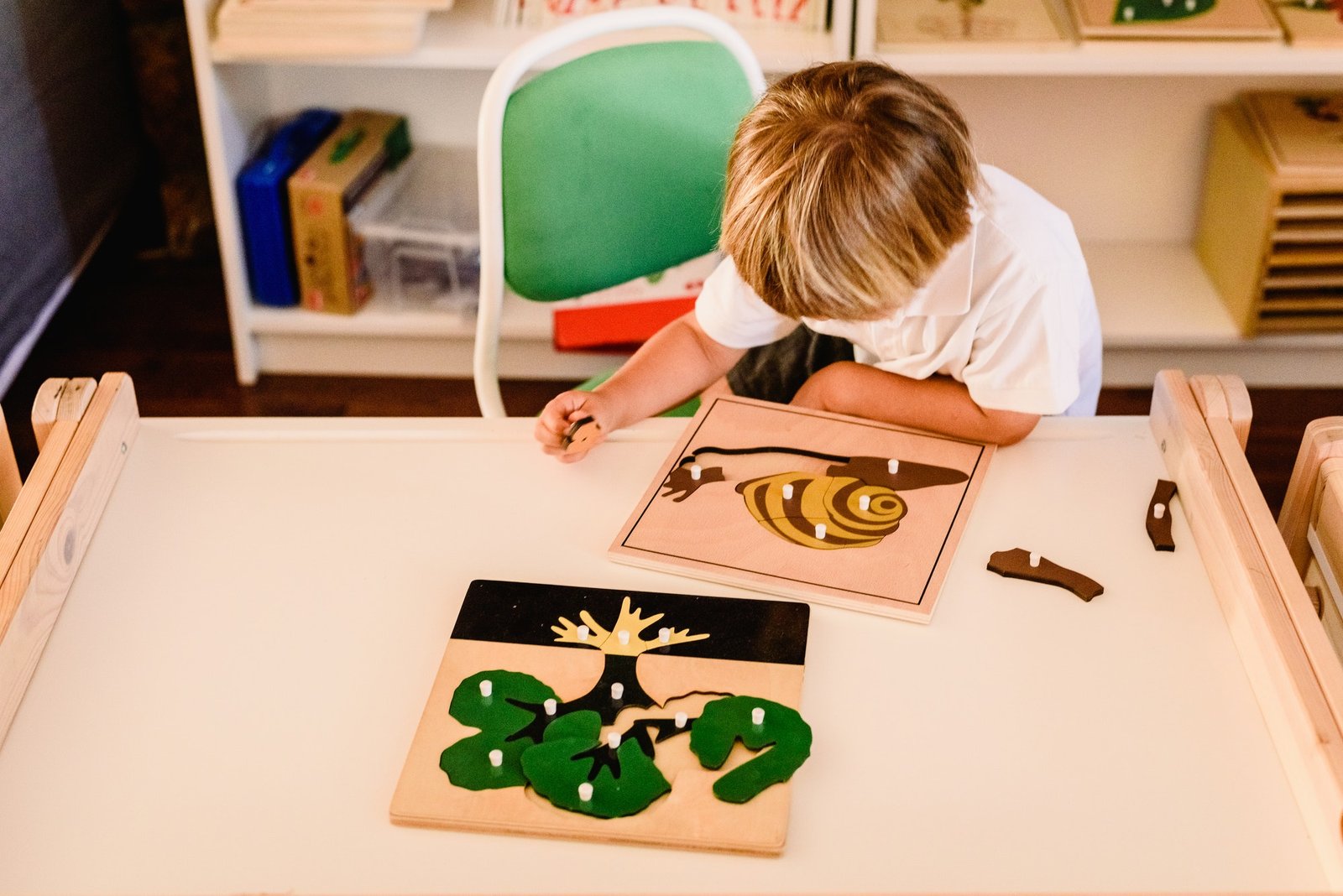
Why is Flexibility in Montessori Classroom Layout Important?
Flexibility in the Montessori classroom layout is crucial. It allows educators to adapt the environment to meet the changing needs and interests of children. This adaptability is essential for:
- Accommodating Different Learning Styles: Every child is unique, and a flexible layout can cater to various learning styles, ensuring that each child’s needs are met.
- Evolving with the Children: As children grow and their interests develop, the classroom environment can evolve to challenge and engage them appropriately.
- Facilitating Different Activities: Different activities require different setups. A flexible layout ensures that the environment can be quickly and efficiently rearranged to suit diverse activities.
Navigating Spatial Limitations in Montessori Design
When it comes to designing a Montessori classroom layout, space is a crucial factor. But how do we overcome the challenge of spatial limitations, especially in smaller rooms?
Creative Use of Space
In situations where space is at a premium, creativity becomes key. We focus on multi-functional furniture and innovative layout designs that maximize the available area. For example, shelving units that double as room dividers can create distinct learning areas without the need for additional structures.
Customized Solutions
Our approach is not one-size-fits-all. Understanding that every educational space has its unique dimensions and requirements, we offer customized furniture solutions. This flexibility allows us to tailor our products to fit various spatial constraints, ensuring that even the smallest classrooms can be effectively transformed into Montessori learning environments.
Addressing Safety and Appropriateness in Material Selection
Safety is paramount in any educational setting. How do we ensure that the materials and furniture we provide are not only conducive to learning but also safe and appropriate for young children?
Rigorous Quality Checks
Our products undergo stringent quality checks, adhering to international safety standards. This ensures that every item – from furniture to educational toys – is non-toxic, durable, and child-friendly. We understand that peace of mind for educators and parents comes from knowing that children are interacting with safe materials.
Age-Appropriate Design
Montessori materials are unique in that they are designed to cater to specific developmental stages. We collaborate with educational experts to ensure that our products are age-appropriate, supporting the developmental needs of children at different ages and learning stages.
Efficient Production Lines
As a factory with five production lines, we have optimized our manufacturing processes to be as efficient as possible. This efficiency allows us to minimize costs without compromising the quality of our products.
Direct Wholesale Model
Our business model, focusing on B2B wholesale, eliminates middlemen, allowing us to offer lower prices. By dealing directly with us, kindergartens and educational institutions can enjoy significant cost savings, making high-quality Montessori furniture more accessible.
Ensuring Longevity and Sustainability in Montessori Furniture
In a Montessori setting, the longevity and sustainability of furniture are as important as its functionality. How do we ensure that our furniture not only stands the test of time but also adheres to sustainable practices?
Durable Materials: Our selection of robust materials guarantees that furniture withstands the energetic and explorative nature of young learners. This durability ensures a longer lifespan, reducing the need for frequent replacements.
Eco-Friendly Practices: Sustainability is at the heart of our manufacturing. We use environmentally friendly materials and processes, contributing to a healthier planet and safer learning environments.
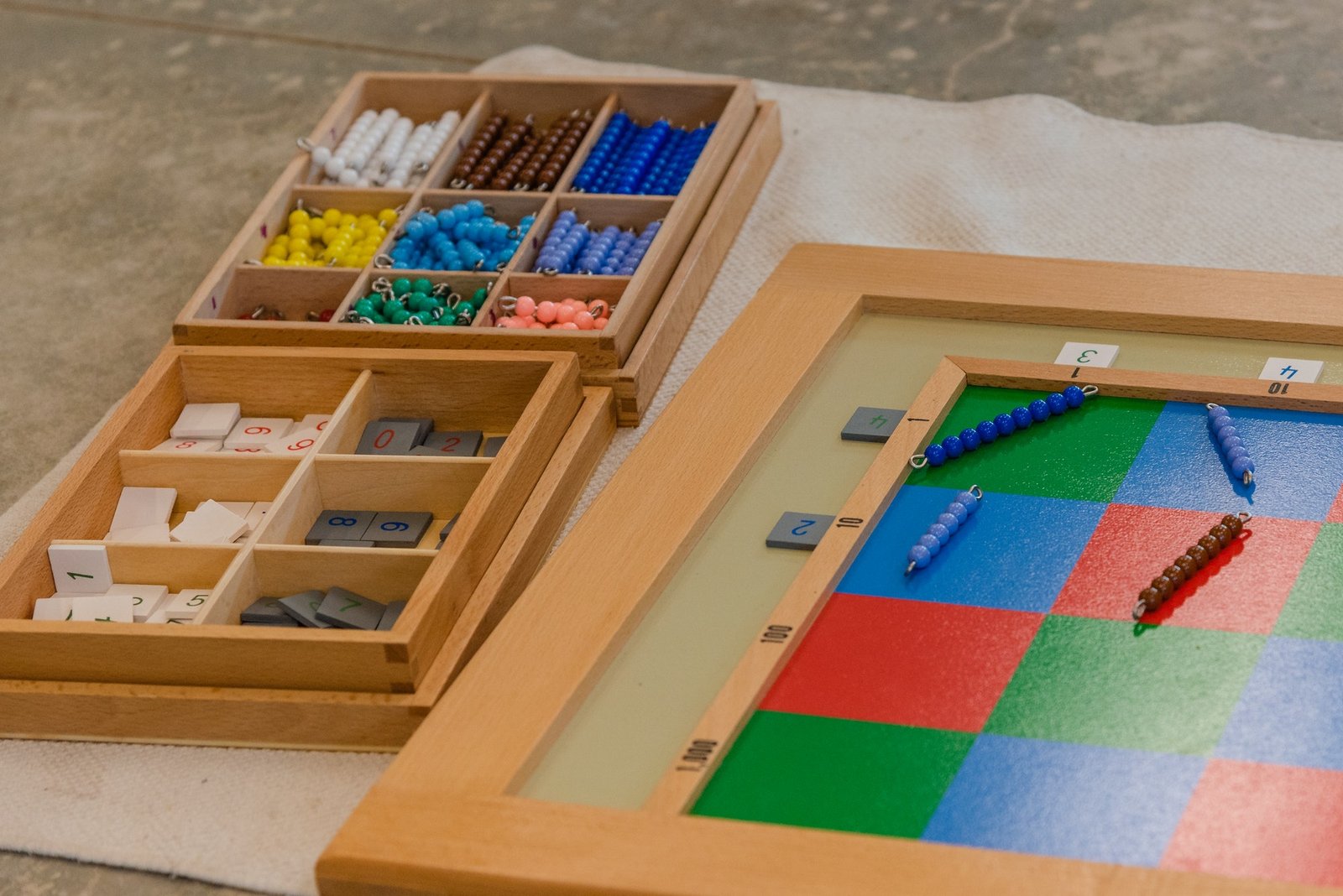
How to Optimize Your Montessori Classroom Layout?
In the world of Montessori education, the classroom is more than just a room; it’s a learning environment that nurtures independence, curiosity, and respect for a child’s natural psychological, physical, and social development. Optimizing your Montessori classroom layout isn’t just about aesthetics; it’s about creating an environment that embodies the Montessori philosophy and enhances the learning experience. This involves careful consideration of furniture placement, learning zones, and the overall ambiance of the classroom.
Practical Tips for Montessori Classroom Design
Here are some practical tips for optimizing your Montessori classroom layout:
- Ensure free movement within the classroom.
- Choose multi-functional, child-sized furniture.
- Organize learning materials by subject area.
- Create clear, defined spaces for group and individual activities.
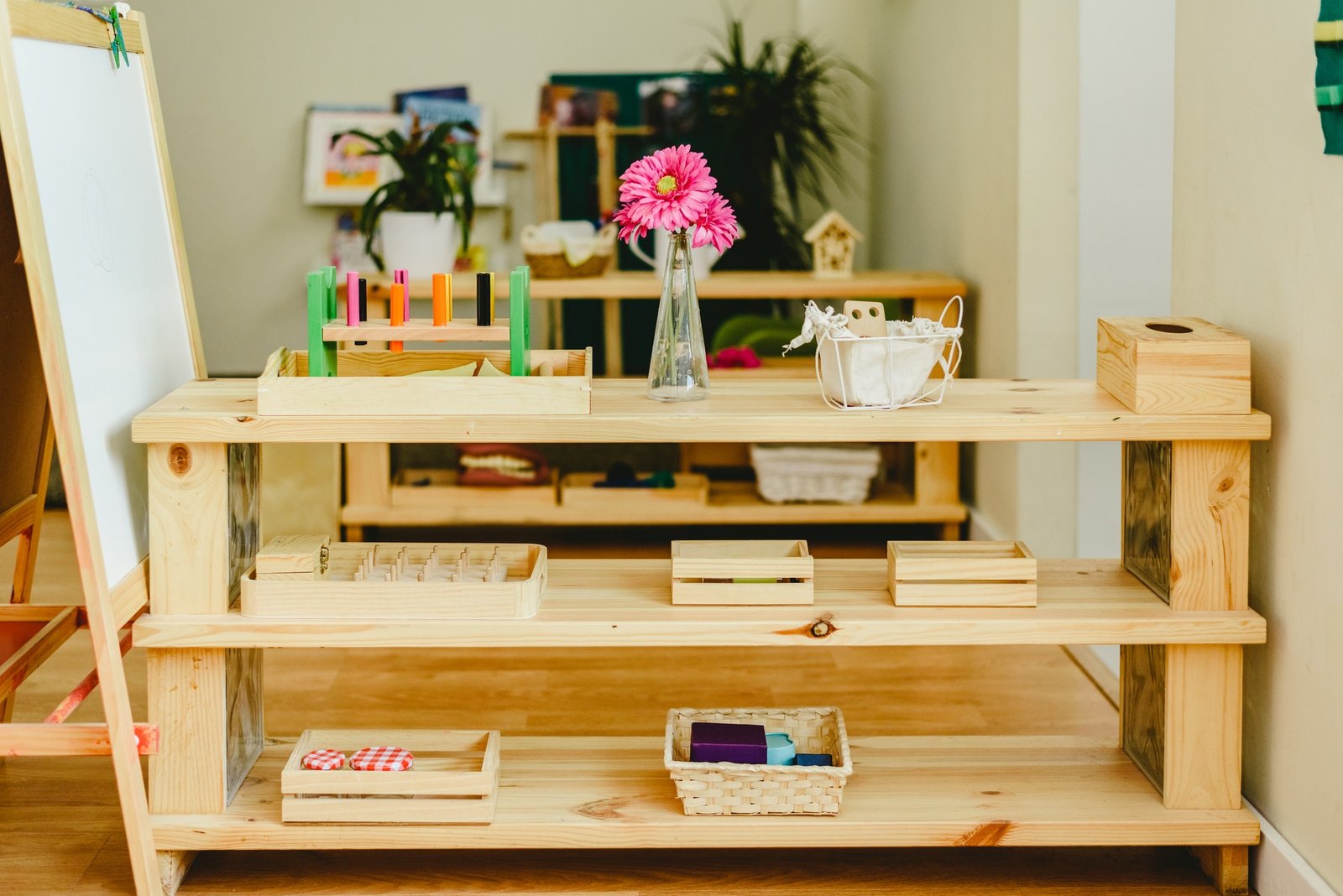
Conclusion
The layout of a Montessori classroom is a fundamental aspect of its success. It influences every facet of a child’s learning experience, from their interaction with materials to their relationship with teachers and peers. At TOP Montessoris, we are dedicated to providing furniture and designs that embody the essence of Montessori philosophy, ensuring that each classroom we furnish is a space where children can thrive and learn with joy.

